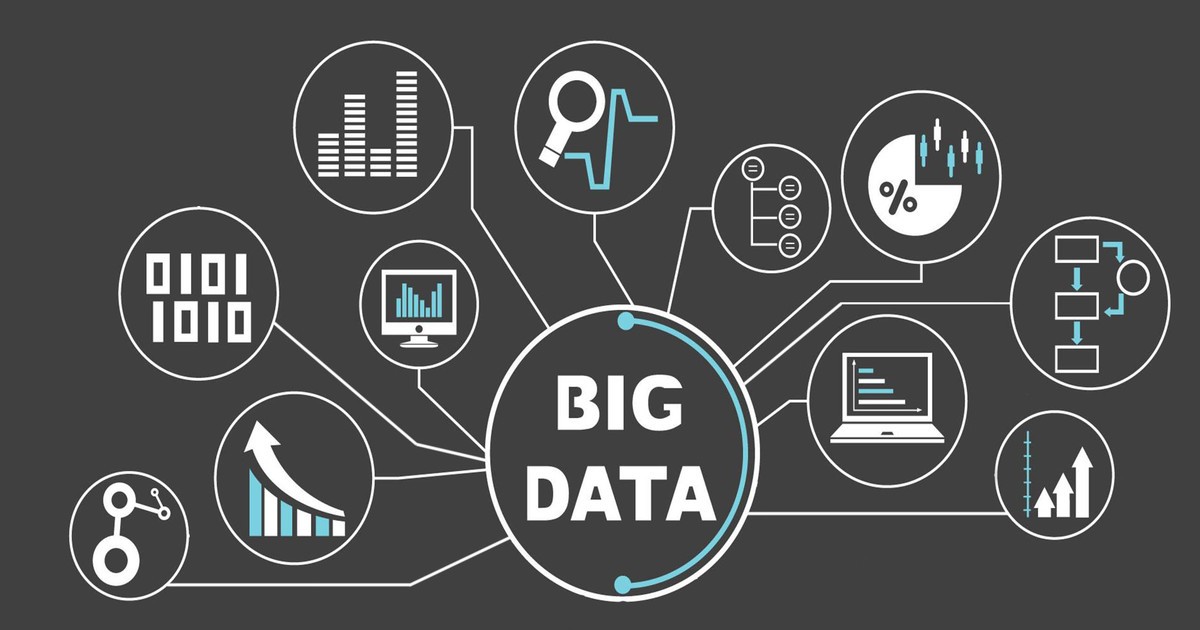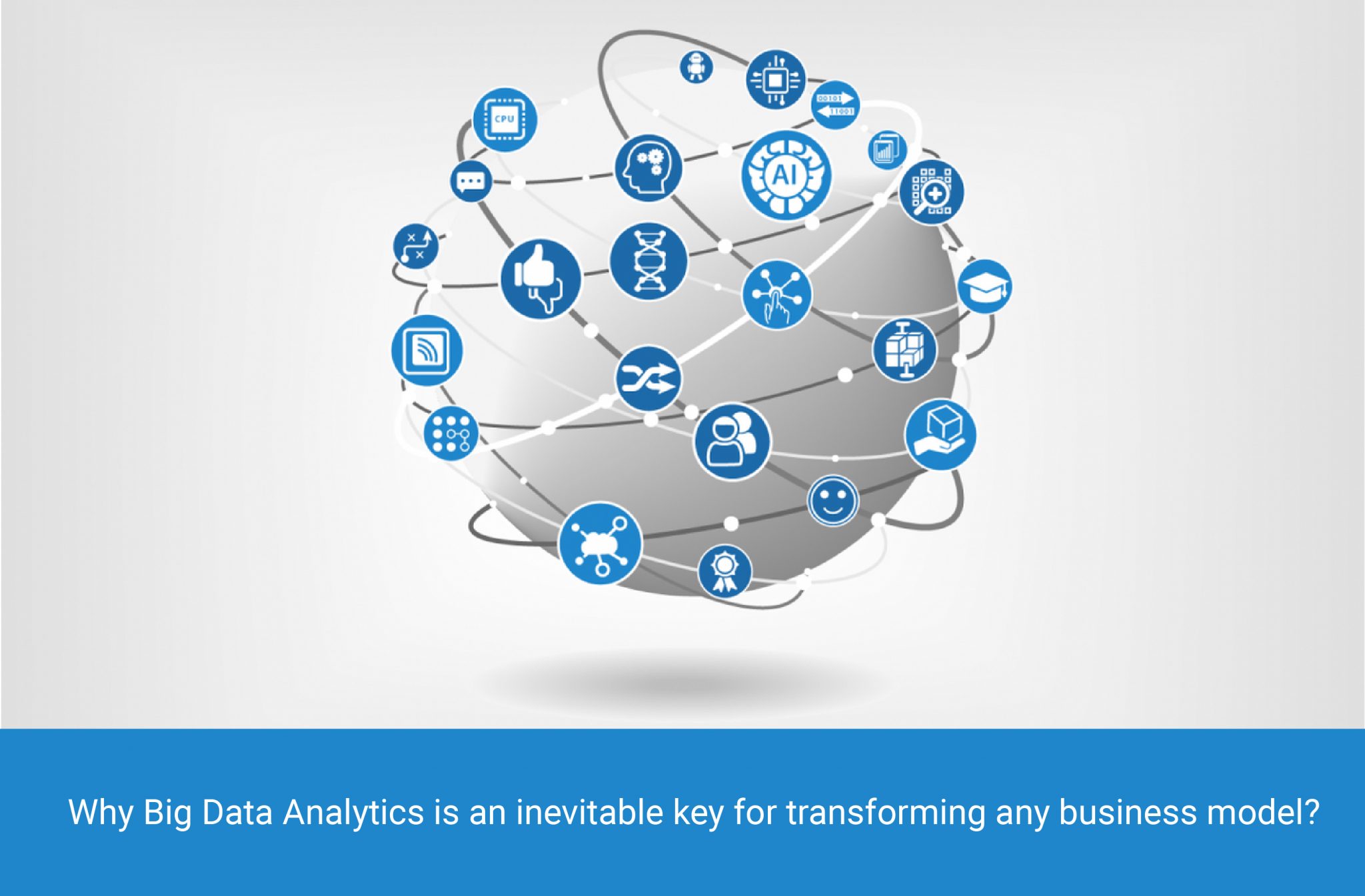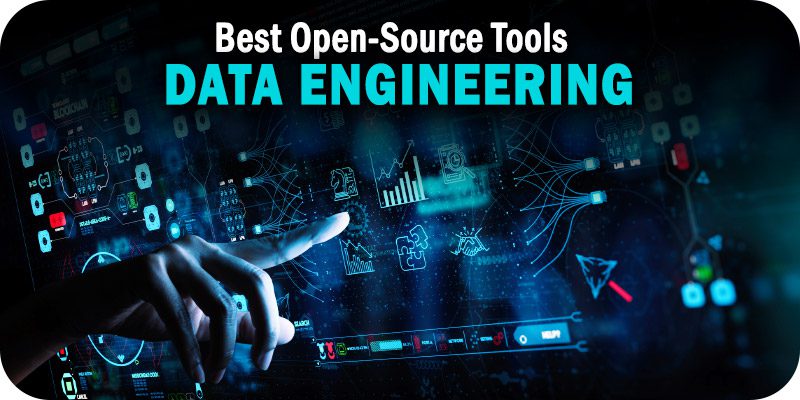Data engineering for big data times: step by step into the future of data engineering.
Published

How is data engineering developing in the age of big data?

Those : digitalvidya.com
Data engineering is evolving rapidly in the age of big data, adapting to the challenges and opportunities that come with processing and analyzing large amounts of data. Here are some trends shaping the evolution of data engineering in the era of big data:
Scalability: Data engineering must adapt to processing huge amounts of data and develop scalable solutions for storing, processing and analyzing big data.
Real-time and streaming data: Data engineering must adapt to processing real-time and streaming data to meet the growing demand for real-time analytics and data-driven decisions.
Data quality and data integrity: Given the diversity and complexity of big data, data engineers must ensure that data quality and data integrity are maintained to ensure reliable results.
Automation and AI: Data engineering is increasingly supported by automation technologies and AI-driven solutions to improve the efficiency, speed and accuracy of data processing.
Data Governance and Compliance: With growing privacy and compliance concerns, data engineers must implement robust data governance practices to ensure data protection and compliance.
Cloud computing: Cloud-based data engineering is gaining traction as it offers scalable, flexible and cost-effective solutions for processing big data.
Open source technologies: Open source technologies play an important role in data engineering for big data as they are flexible, customizable, cost-effective and have an active developer community.
Data integration and transformation: Data integration and transformation continue to be critical aspects of data engineering in the era of big data, as data from disparate sources must be unified, cleaned, and transformed to make it useful for analytics.
DataOps and DevOps: DataOps and DevOps practices are gaining importance in data engineering for big data as they promote agile development methodologies, collaboration and automation to improve the efficiency and quality of data processing.
Future Prospects: The future of data engineering in the era of big data is bright, with potential applications in various areas such as artificial intelligence, machine learning, IoT and others that will continue to shape the field.
What are the key challenges and opportunities for data engineering in the era of big data?

Those : developeronrent.com
In the era of big data, data engineers face various challenges and opportunities. Here are some of the most important ones:
Challenges:
Scalability: Processing and analyzing large amounts of data requires scalable solutions that can handle the exponential growth of big data.
Real-time and streaming data: Processing real-time and streaming data requires special technologies and approaches to deal with the high data rate and fast data stream.
Data quality and data integrity: Ensuring data quality and data integrity is challenging in big data environments because data can come from different sources and come in different formats and qualities.
Data integration and transformation: Integrating and transforming data from different sources and in different formats requires complex ETL (Extract, Transform, Load) processes and tools to make data usable for analysis purposes.
Data governance and compliance: Data protection and compliance are important challenges in the era of big data, as data engineers must ensure that data is processed securely and in accordance with applicable regulations.
Opportunities:
Advances in Technology and Tools: There are a variety of advanced technologies and tools for data engineering in the era of big data that help data engineers work more efficiently and effectively.
Generate value from big data: Big data offers enormous opportunities to gain valuable insights and value from data to make better decisions, develop new business models and find innovative solutions.
Innovation potential: Data engineers can develop innovative solutions and applications based on big data and find application in various areas such as artificial intelligence, machine learning, IoT and more.
Cloud computing: Cloud-based data engineering provides scalability, flexibility and cost-effectiveness to process big data and deliver analytics applications.
DataOps and DevOps: DataOps and DevOps practices enable agile development methodologies, collaboration and automation to improve the efficiency and quality of data processing and optimize the development process.
Overall, in the age of big data, big data and data engineering offer both challenges and opportunities to gain valuable insights and added value from large amounts of data and to develop innovative solutions.
Which new trends and technologies are shaping the future of data technology for big data?

Those : power.atsondemand.com
The future of data technology for big data will be shaped by various trends and technologies. Here are some key examples:
Data Lakes and Data Hubs: Data lakes and data hubs are modern data architectures that make it possible to centrally store and efficiently process large amounts of structured and unstructured data. They offer scalable and cost-effective solutions for processing big data.
Streaming and real-time data processing: Streaming and real-time data processing is becoming increasingly important as companies need real-time insights into their data to make quick decisions and support real-time applications. Technologies such as Apache Kafka, Apache Flink and Apache Spark Streaming are leading the way.
Artificial Intelligence and Machine Learning: Artificial intelligence (AI) and machine learning (ML) play an important role in processing big data to extract insights and patterns from the data. Advances in deep learning, reinforcement learning, and natural language processing (NLP) enable advanced AI and ML applications in data engineering.
Cloud computing and serverless architectures: Cloud computing and serverless architectures provide scalable, flexible and cost-effective solutions for processing big data. Platforms such as Amazon Web Services (AWS), Microsoft Azure and Google Cloud Platform (GCP) offer a variety of big data services and tools.
DataOps and MLOps: DataOps and MLOps are agile development practices that enable a combination of DevOps, continuous integration/continuous deployment (CI/CD), and data engineering. You support the efficient development, deployment and management of data and ML applications in big data environments.
Data integration and data management: Data integration and data management will remain important areas in the future of data technology for big data. There are advanced tools and technologies such as data catalogs, data pipelines and data governance solutions that improve the efficiency and quality of data processing.
Edge computing: Edge computing is becoming increasingly important as more and more data is generated at the edges of the network, e.g. B. through IoT devices. Edge computing technologies enable data to be processed close to the source to enable real-time analysis and response.
Data protection and security: Data protection and security will continue to be of great importance in the future of data technology for big data. There are advanced technologies and approaches such as data masking, data encryption, data privacy frameworks and access controls to ensure the security of data in big data environments.
How are data engineers adapting to deal with the growing volume, velocity and diversity of big data?

Those : analyticsvidhya.com
To deal with the growing volume, velocity, and diversity of big data, data engineers are adapting by taking the following actions:
Scaling data processing systems: Data engineers use scalable data processing systems such as Apache Hadoop, Apache Spark, and Apache Flink to efficiently process large amounts of data. These systems enable parallel processing of data and scaling of resources to handle the growing volume of big data.
Leveraging Cloud Computing: Cloud computing platforms such as Amazon Web Services (AWS), Microsoft Azure, and Google Cloud Platform (GCP) provide scalable and elastic resources for processing big data. Data engineers use cloud-based services such as Amazon S3 for data storage and Amazon EMR, Azure HDInsight or Google Cloud Dataproc for data processing to adapt to the growing demands of big data.
Using streaming and real-time data processing: Streaming and real-time data processing technologies such as Apache Kafka, Apache Flink, and Apache Spark Streaming enable data engineers to process data in real-time and gain rapid insights into the data. This allows them to handle the speed and diversity of big data.
Automation of data processing tasks: Data engineers use automation techniques such as data pipelines, workflow orchestration, and DevOps practices to efficiently automate the data processing tasks. This allows them to keep up with the growing volume of big data and reduce human errors.
Leveraging data modeling and database design: Careful data modeling and database design help data engineers store and retrieve data efficiently. They use techniques such as database normalization, indexing, and data partitioning to optimize database performance and scalability and adapt to the growing volume of big data.
Use of machine learning and AI: Machine learning and AI play an important role in the processing of big data. Data engineers use ML and AI techniques such as machine learning, deep learning and NLP to extract patterns and insights from the data and analyze big data efficiently.
Consideration of data protection and security: Data protection and security are also of great importance with big data. Data engineers implement security measures such as data encryption, access controls, and data anonymization to ensure the confidentiality and integrity of data and comply with data protection regulations.
What are the best practices for developing scalable and efficient data pipelines for processing big data?

Those : futureskillsprime.in
Here are some best practices for developing scalable and efficient data pipelines for processing big data:
Use of distributed systems: Big data requires the processing of large amounts of data that cannot be handled on a single machine. Using distributed systems such as Hadoop, Spark, or other cluster frameworks allows data to be processed in parallel across multiple machines to improve scalability and efficiency.
Minimize data partitioning and shuffling: Carefully partitioning data into smaller chunks and minimizing data shuffling operations, which require moving data between nodes in the cluster, can minimize bottlenecks and latency issues.
Use of columnar storage and compression: Using columnar storage and data compression techniques such as Parquet, ORC or Avro can improve data processing efficiency by only reading the data needed and using less storage space.
Optimizing data flows: Optimizing data flows and transformations, including the use of filters, aggregations, and joins, can improve processing speed and efficiency. Avoiding unnecessary transformations or duplication of data can improve performance.
Monitoring and optimizing resources: Monitoring and optimizing resources such as CPU, memory, and network bandwidth in a big data cluster is important to identify and resolve bottlenecks to improve performance.
Error handling and recovery: Implementing robust error handling mechanisms, such as automatic retry, error logging, and resiliency, is critical to detect and resolve errors in data pipelines to ensure uninterrupted processing of big data.
Scale on demand: The ability to scale the resources in a big data cluster on demand allows for flexible response to changes in data processing load and optimizes performance.
Security and privacy: Appropriate security measures such as authentication, authorization and encryption of data are important to ensure the integrity and confidentiality of big data and to comply with data protection regulations.
Testing and quality assurance: To ensure that data pipelines work without errors, comprehensive testing and quality assurance is of great importance. This includes unit testing, integration testing and end-to-end testing to ensure data processing is done correctly and efficiently.
How can data engineers ensure data quality and integrity in large-scale big data workflows?
Ensuring data quality and integrity in large-scale big data workflows is a key challenge for data engineers. Here are some best practices to achieve this:
Data validation and cleansing: Data engineers should implement mechanisms for data validation and cleansing to ensure that only high-quality and accurate data enters the workflow. This can include checking data formats, validating values, detecting missing or inconsistent data, and cleaning up duplicate or error data.
Data profiling and data discovery: Through data profiling and data discovery, data engineers can gain a better understanding of the quality and integrity of data in big data workflows. This includes analyzing data statistics, identifying data anomalies and patterns, and identifying data quality issues.
Data Lineage and Data Audit: Data Lineage is the tracking of data flows and transformations in the workflow, while Data Audit involves the monitoring of data changes and accesses. By implementing data lineage and data audit, data engineers can ensure data quality and integrity in big data workflows and identify potential problems early.
Error detection and handling: Data engineers should implement mechanisms for early detection of errors in data pipelines and set up appropriate error handling mechanisms to ensure that incorrect data does not enter the workflow and the integrity of the data is maintained.
Automated monitoring and alerts: Implementing automated monitoring of data pipelines and setting up alerts for deviations from defined quality or integrity metrics allows data engineers to identify and remediate potential data quality issues early.
Data encryption and access control: Implementing data encryption and access control mechanisms is critical to ensuring the confidentiality and integrity of data in big data workflows and preventing unauthorized access.
Data Governance and Data Management: A solid data governance and data management strategy is essential to ensure data quality and integrity in big data workflows. This includes setting data standards, policies for data management, data cataloging and metadata management.
What should be considered when processing real-time and streaming data in big data engineering projects?
Processing real-time and streaming data in big data engineering projects requires special attention and careful planning. Here are some important aspects to consider:
Scalability and throughput: Real-time and streaming data can arrive in large volumes and at high speeds. Therefore, it is important to ensure that the data processing pipeline is scalable and able to handle the expected throughput. Technologies such as Apache Kafka, Apache Flink or Apache Storm, which were specifically developed for processing real-time and streaming data, can be used.
Latency and real-time requirements: Real-time and streaming data require processing data in real-time or near real-time. Therefore, it is important to minimize latency and ensure that the data pipeline is capable of meeting real-time requirements. This requires selecting appropriate tools and technologies capable of processing data in real time, as well as optimizing data processing processes to minimize latency.
Data stream processing and event-driven architecture: Real-time and streaming data will arrive in the form of data streams and therefore require processing of data stream processing paradigms and event-driven architectures. Data engineers must be able to efficiently collect, process and analyze data streams using appropriate technologies and frameworks such as Apache Kafka or Apache Flink.
Real-time data validation and cleansing: Data quality and integrity are also of great importance when processing real-time and streaming data. Therefore, data engineers need to implement mechanisms for real-time data validation and cleansing to ensure that only high-quality and accurate data enters the workflow.
Scalable storage of real-time data: Real-time and streaming data can occur in large volumes, so it is important to ensure scalable and efficient storage of real-time data. This may include using NoSQL databases, distributed file systems, or in-memory databases to efficiently store and retrieve real-time data.
Monitoring and Error Detection: Monitoring real-time and streaming data is critical to ensuring the performance, reliability, and accuracy of the data processing pipeline. It is important to set up appropriate monitoring mechanisms to monitor real-time data streams, detect errors early and take appropriate troubleshooting measures.








